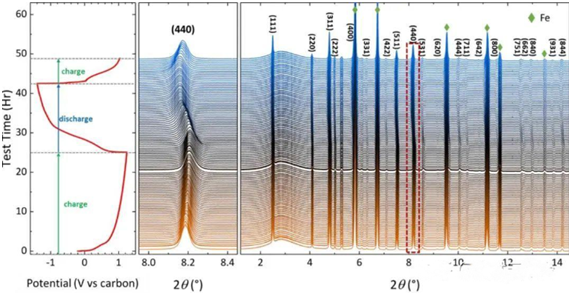
- Home
- >
- News
- >
- In situ XRD application
- >
In situ XRD application
2024-02-28 00:00Spinel oxide is a promising high-pressure cathode material for reversible insertion of Mg2+, and further optimization of Mg2+ spinel cathode requires a comprehensive and fundamental understanding of the migration mechanism of all mobile cations (Mg2+ and Mn2+) and the corresponding evolution of the main structure. In-situ XRD is one of the most popular and developed advanced characterization techniques for studying lithium-ion and sodium-ion battery systems in electrochemical processes.

Here, Saul H. Lapidus et al. at Argonne National Laboratory in the United States designed a new Operando battery device to study the cation migration mechanism of MgCrMnO4 cathode, which for the first time realized the accurate quantization of cation content in the main structure of multivalant batteries by using high-quality Operando XRD data. In addition to the abnormal reversibility of 12% Mg2+ embedding in Mg1-xCrMnO4 (X≤1), partial reversible embedding of excess Mg2+ during overdischarge.

In addition, experiments show that the insertion/extraction reaction is accompanied by a series of cation redistribution in the spinel framework, which is further supported by theoretical DFT calculations, and adjusting the Mg/Mn conversion is a direct way to further optimize the spinel oxide positive electrode of magnesium ion batteries.
